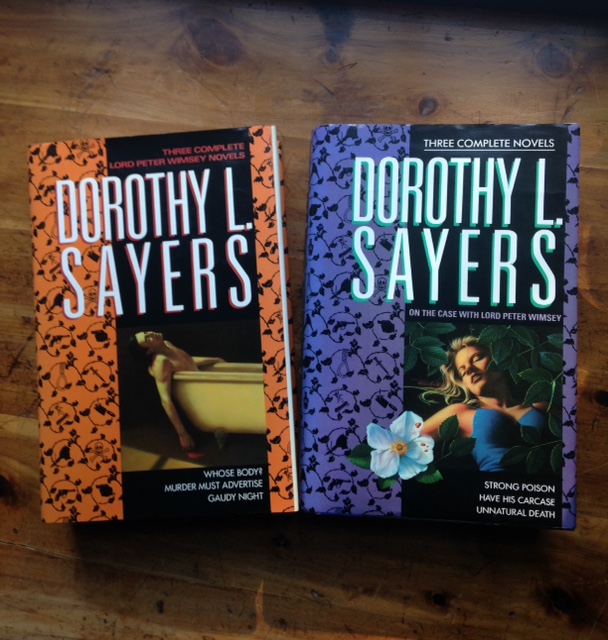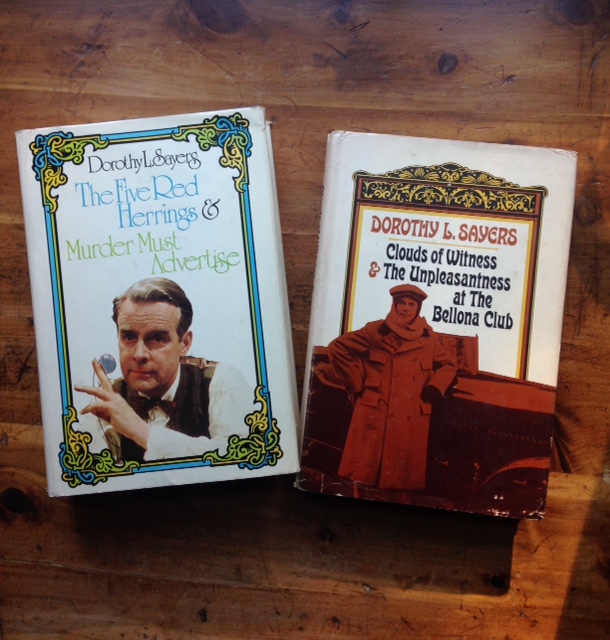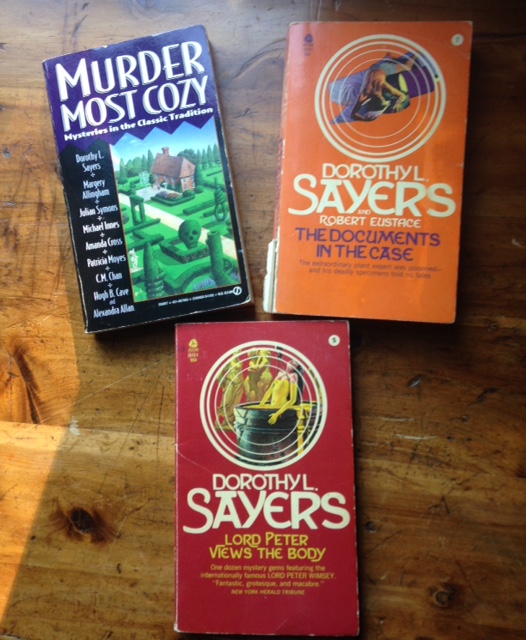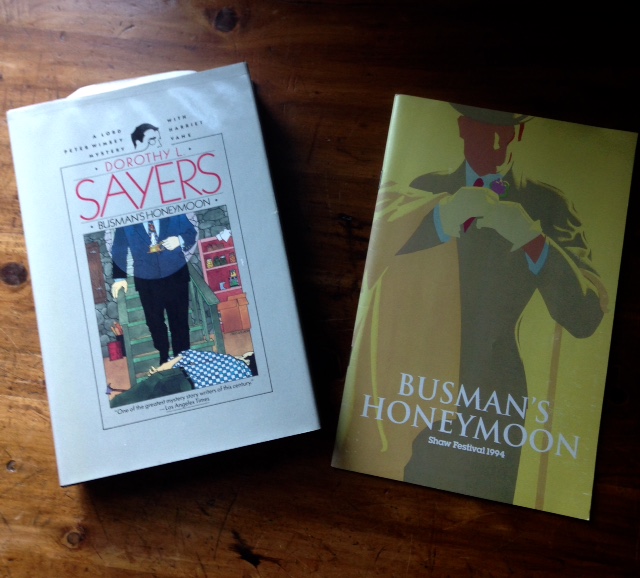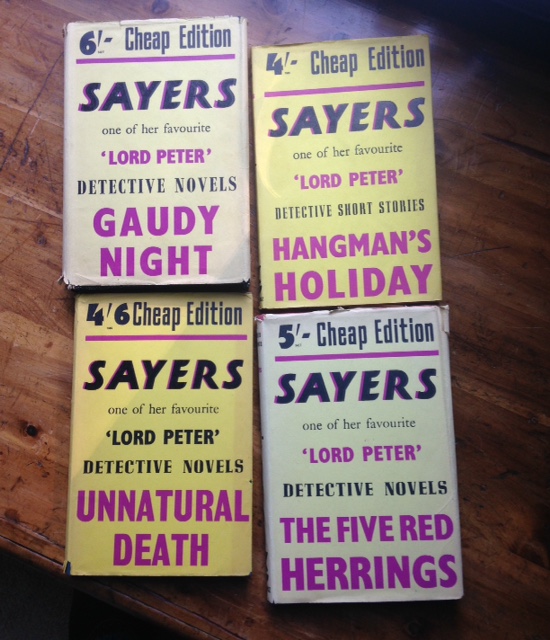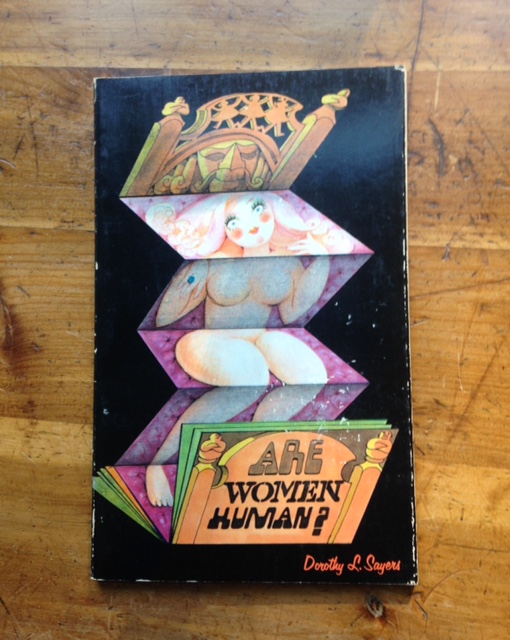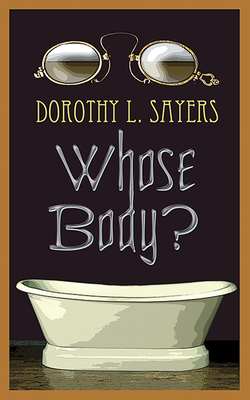By “Queen of Mystery,” I don’t mean Agatha Christie. Frankly, Christie’s mysteries usually annoy me—too much alligator-over-the-transom in her solutions—meaning that some completely unforeseen, unpredictable bit of info suddenly appears and unlocks everything. (No offense to Christie fans out there; but reading preferences are very individual. Ask any writer who’s received multiple rejections for a piece of work that someone more on the same wavelength eventually accepts.) No, if I were bestowing the crown, it would be Dorothy L. Sayers.
Sayers was a woman of many achievements. She translated Dante, wrote poetry, and worked as a copyeditor. She was a playwright, essayist, literary critic, and Christian humanist, as well as a student of classical and modern languages. But she is best known for her Lord Peter Wimsey/Harriet Vane mysteries. You may recall from last Friday’s blog that Sayers is one of the few fiction authors I periodically re-read. Now, you might ask, “Why would anyone reread a mystery? Once you know Who Done It—and probably how and why—what’s the point?”
In the case of Sayers, my answer is three-fold. First there is her openings that draw me. The Unpleasantness at The Bellona Club begins, “’What in the world, Wimsey, are you doing in this Morgue?’ demanded Captain Fentiman, flinging aside “The Evening Banner” with the air of a man released from an irksome duty. ‘Oh, I wouldn’t call it that,’ retorted Wimsey, amiably. ‘Funeral Parlor at the very least. Look at the marble. Look at the furnishings. Look at the palms and the chaste bronze nude in the corner.'”
Five Red Herrings opens, “If one lives in Gallowy, one either fishes or paints. . . To be neither of these things is considered odd and almost eccentric.”
Strong Poison begins, “There were crimson roses on the bench; they looked like splashes of blood. The judge was an old man; so old, he seemed to have outlived time and change and death. His parrot-face and parrot-voice were dry, like his old heavily-veined hands. His scarlet robe clashed harshly with the crimson of the roses.”
Have His Carcase begins, “The best remedy for a bruised heart is not, as so many people seem to think, repose upon a manly bosom. Much more efficacious are honest work, physical activity, and the sudden acquisition of wealth.”
The second reason to reread is to really grasp the intricate plots that often allow me to learn something. And, coincidentally, to appreciate all the ways she foreshadowed the ending and inserted the evidence and clues without telegraphing the ending. In various Sayers novels, I learned the effects of chronic ingestion of arsenic, a lot about English bell-ringing, cyphers, the advertising world, a great deal about the questions surrounding the execution of the family of Czar Nicholas II—among other things.
And then there are the characters and their romance. I recently read that Sayers once commented that Lord Peter Wimsey was a mixture of Fred Astaire and Bertie Wooster. I always envisioned Wimsey as Astaire, even when the TV serials starred Ian Carmichael or Edward Petheridge. He’s brilliant, graceful, athletic, debonaire—plus he blathers, and suffers “shell shock” (a.k.a., PTSD). Harriet Vane is highly intelligent, strong-willed, principled, with a low opinion of men—and not really beautiful. I find them appealing in their flaws.
Sayers set her mysteries between WWI and WWII, but they are still popular today. Masterpiece Theater aired the series. The complete DVD collection was released in 2003.
Harriet Vane was very atypical for her time. Sayers did not devote a lot of time to talking or writing about or otherwise dealing with her own non-traditional choices, let alone her heroine’s. In Are Women Human, two Sayers essays address the issue of women in society. Her position is that women are first and foremost human beings, and that women and men must be regarded and treated as essentially much more alike than different. Human beings—color, age, background or abilities aside—are equal. Sex does not, a priori, determine anything. Sounds pretty modern to me!
So get thee to the library or Amazon or your favorite bookstore and sample Dorothy L. Sayers. Her first mystery was Whose Body? That’s as good a place as many to start. Unless you’d rather go for romance first, in which case, start with Strong Poison. But do it!
